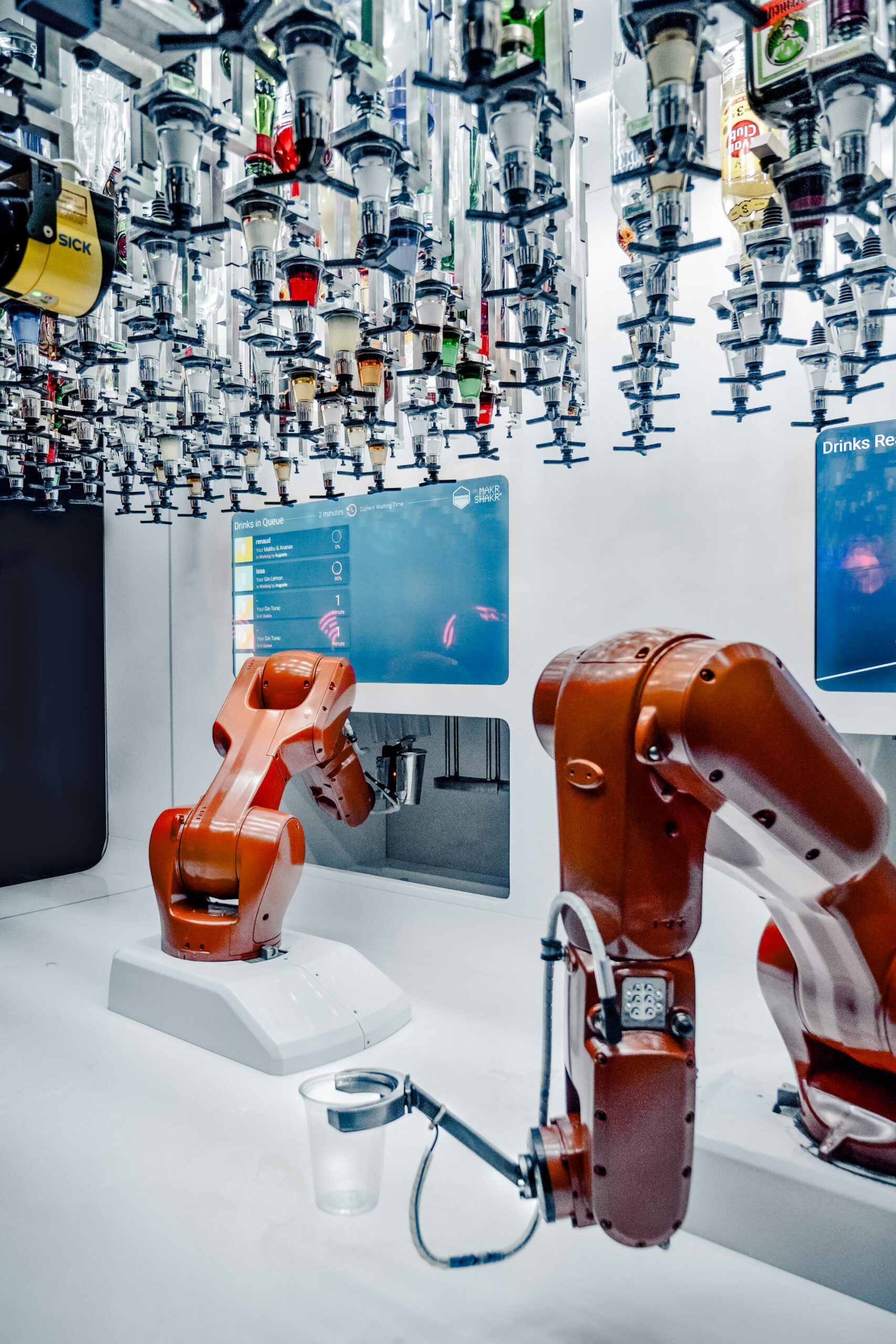

AI at Enterprise Scale
/ AI Use Cases That Redefine Leadership: A Blueprint for Enterprise Transformation
Artificial Intelligence has transitioned from isolated experiments to become a core enabler of enterprise-wide transformation. Visionary leaders now recognize AI not as a tool, but as a strategic lever. It is reshaping how businesses engage customers, adapt operations, empower talent, accelerate innovation, and govern with foresight.
At the center of this shift lies one undeniable truth: The winners in AI won’t be those with the most powerful models or infrastructure. Use cases are the ultimate currency to turn AI into business impact at scale and drive broad adoption with real users.
This briefing presents use cases in five critical functional domains with measurable business outcomes:
Intelligent Growth & Customer Experience Engines
AI shifts customer engagement from static outreach to adaptive, insight-driven systems that evolve with every client interaction:
[B2B] Dell enhanced its lead qualification process using a machine learning-based scoring system that analyzes real-time behavioral signals like website visits and demo requests alongside firmographic data. This dynamic model replaced static rule-based scoring, helping sales teams identify high-intent prospects faster. As a result, Dell streamlined sales outreach, improved conversion efficiency, and ensured that reps engaged more with leads most likely to convert.
[B2C] McDonald’s applies AI-powered natural language processing to monitor consumer sentiment across platforms like social media and review sites to keep the offering portfolio relevant. When online signals revealed growing demand for a discontinued menu item, the brand quickly validated the insight and reintroduced the product. This approach enabled faster decision-making, tighter alignment with consumer expectations, and greater responsiveness in campaign execution.
Next-Generation Adaptive Operations & Supply Chain Ecosystems
Operational resilience today depends on systems that can sense, decide, and respond to change as it happens:
UPS’s On-Road Integrated Optimization and Navigation [ORION] system uses real-time data analytics, predictive modeling, and optimization algorithms to dynamically adjust delivery routes daily for over 55,000 drivers. Unlike static route planning, ORION responds in real time to variables such as traffic conditions, weather, package load, and time-sensitive delivery windows, which results in greater operational precision. This intelligent orchestration has also reduced fuel consumption, improved delivery punctuality, and lowered miles driven per package, contributing to over 100,000 metric tons of reductions in carbon emissions.
IKEA has advanced its warehouse operations by deploying AI-powered drones equipped with computer vision and indoor positioning systems to automate inventory checks across its distribution centers. These drones autonomously scan products and barcodes during off-hours, feeding visual data into a central system that updates stock levels in near real time. Adding drone data streams to this AI system, has significantly reduced the need for manual cycle counting, minimized shrinkage, and improved fulfillment accuracy, all without disrupting daily warehouse operations.
Workforce Intelligence & Human Augmentation
AI enables organizations to reduce friction in work and scale skills with precision taking performance from zero to eighty percent, while it’s still the human element that brings it to hundred:
Unilever transformed its recruitment process by adopting an AI-powered system that uses machine learning and natural language processing to screen resumes and assess candidates through video interviews in early-stage screening. This shift not only accelerated hiring timelines from four months to four weeks but also augmented HR teams to focus on high-value interactions and strategic talent decisions. As a side effect, it substantially improved candidate-objectivity and workforce diversity.
IBM leverages AI-powered learning platforms to tailor training journeys based on each employee’s role, skills, and learning behavior. By analyzing job requirements alongside individual performance and preferences, the system recommends personalized courses and certifications. This approach enables scalable upskilling and reskilling across the organization while enhancing learner engagement, reducing time to skill acquisition, and improving overall training effectiveness.
Computational R&D & Scalable Innovation
Breakthroughs now emerge by design, not accident as AI accelerates how ideas are explored, tested, and the dots are connected.
Boehringer Ingelheim applied quantum-inspired machine learning models in pharmaceutical R&D in partnership with Google, specifically targeting the simulation of complex molecular interactions. Traditional computing methods struggle with the scale and variability of protein folding and drug-binding dynamics. By combining generative AI and advanced simulation techniques, the collaboration enables researchers to screen therapeutic candidates in silico [silico screening: a computer-based approach used to predict the behavior of molecules] with greater precision and speed. This significantly shortens early-stage development cycles, accelerates lead compound identification, and opens new possibilities for tackling previously intractable disease targets.
Massachusetts Institute of Technology [MIT] researchers developed an AI system that constructs dynamic knowledge graphs and applies analogy mining to connect ideas across disparate scientific domains. Using semantic similarity models, the platform identifies transferable principles, for example, uncovering structural parallels between Kandinsky’s abstract artwork Composition VII and the architecture of mycelium networks. This insight inspired the creation of a novel biological material combining resilience and flexibility, derived from design principles rooted in art. By surfacing such non-obvious analogies at scale, the system enables R&D teams to break disciplinary silos, accelerate hypothesis generation, and unlock breakthrough innovations that conventional methods often overlook.
AI-Enhanced Governance & Financial Agility
Modern governance requires foresight, not just oversight – and AI delivers the early signals leaders need to act with clarity:
Pfizer employs an AI-powered system to monitor and interpret evolving regulatory frameworks such as the FDA (U.S. Food and Drug Administration), EMA (European Medicines Agency) and EU MDR (European Union Medical Device Regulation). The platform uses a hybrid of rule-based engines and machine learning to surface relevant compliance updates in real time, helping R&D teams anticipate regulatory risks early in the development cycle. By embedding this intelligence into the product design phase, Pfizer reduces late stage redesigns, accelerates approval timelines, and ensures higher alignment with global compliance standards.
HSBC implemented AI-based market surveillance that monitors thousands of transactions per second to flag potential anomalies. By combining natural language processing and anomaly detection, the system reduces investigative time by 60% while increasing the accuracy of fraud detection. This has been instrumental in enhancing both internal compliance and customer trust.
Strategic Imperatives for Transformational Leaders
- Move beyond campaign-centric models of customer engagement and start architecting intelligent omnichannel ecosystems that continuously learn from behavioral signals, adapt content delivery, and personalize experiences at scale. Value today is created through ongoing contextual relevance, not static outreach
- In a volatile environment, competitive advantage comes from designing systems that can sense disruption. It is done by treating operations with production, supply chain, etc. as adaptive value networks rather than linear pipelines. To turn this concept into reality, executives need to create a ‘digital nerve center’ to monitor both short-term crisis responses and strategic reconfigurations
- Position AI as an enabler of workforce augmentation, not a substitute for labor. By eliminating repetitive strain and administrative overhead, AI unlocks human potential for higher-order thinking, creativity, and problem-solving. The future workforce strategy hinges on augmentation, not automation, which brings us closer to the goal of a ‘learning organization’.
- Transition from opportunistic innovation to systematic discovery. Use AI to surface analogies across disciplines, simulate outcomes in silico, and accelerate hypothesis testing. Strategic innovation now depends on institutionalizing exploration through computational intelligence
- Reframe governance as a forward-looking capability embedded into business design. With AI, risk becomes something to anticipate rather than react to, enabling leaders to align compliance, financial discipline, and stakeholder trust before disruptions occur.
Successful leadership in the AI era demands more than strategy. It requires use cases that create value, scale impact, and empower change.
/ About the Author
- Arjun Aditya is a Digital Marketing Associate at bluegain, where he focuses on digital branding and communications. Before joining bluegain, Arjun worked at Adidas AG on a global transformation project, leading user-centric change initiatives that impacted over 1,000 employees. He also gained experience at Pollup Data Services and A2A Digital Transformation Consulting. Arjun holds a Master’s degree in Digital Business Innovation from Politecnico di Milano.
- Dr. Carsten Linz is the CEO and Founder of bluegain. Formerly Group Digital Officer at BASF and Business Development Officer at SAP, he is known for building €100 million businesses and leading large-scale transformations affecting 60,000+ employees. He is represented on various boards including Shareability’s Technology & Innovation Committee and Social Impact. A member of the World Economic Forum’s Expert Network, Dr. Linz is also author of renowned books and articles who shares his expertise in executive programs at top business schools around the world.
- Bhoomi Vithani is a former intern at bluegain, where she focused on researching AI use cases across business functions and analyzing their impact through real-world KPIs. She is currently pursuing a Master’s degree in Management with a focus on Digital Business, Technology, and Operations at the Frankfurt School of Finance & Management. Her interests lie in the intersection of AI, digital transformation, and business model innovation.
/ DOWNLOAD WHITEPAPER
Empowering you with knowledge is our priority. Explore our collection of well-thought-out whitepapers available for download. Should you have any questions or wish to explore further, our team is here to assist you.
download


 back to Article
back to Article